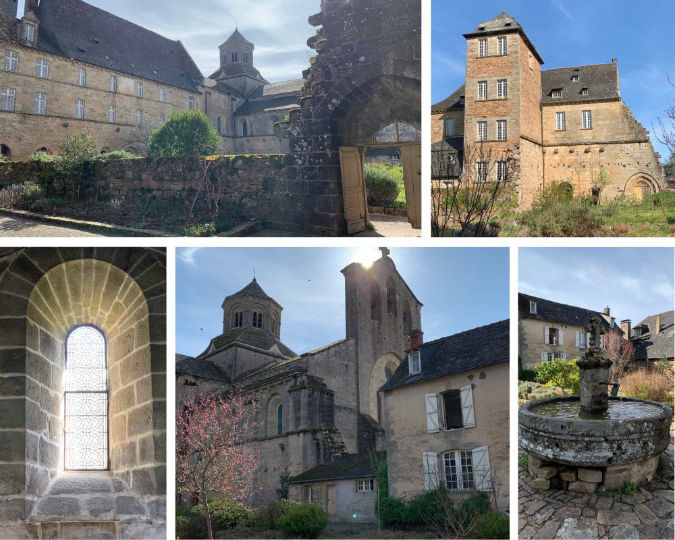
Visit to the Cistercian Abbey of Aubazine
This spirituality was complemented by remarkable ingenuity: between 1140 and 1150, the monks dug the Canal des Moines by hand through the mountain, a hydraulic engineering feat nearly 2 km long, enabling water to be transported from the Coiroux stream to the abbey. This masterpiece, which can still be seen today, remains one of the oldest monastic canals in Europe still in operation.
Faithful to the Rule of Saint Benedict, Cistercian monks rejected urban wealth and lived off the land. To ensure their self-sufficiency, they created a network of monastic granges around the abbey, which were essentially farms often located in sparsely populated areas that they cleared, cultivated and developed. These granges, run by lay brothers (consecrated lay people, distinct from the choir monks), contributed to the agricultural development of vast territories. They raised livestock, grew cereals, vines and hemp, and processed the produce on site using mills, presses and bread ovens.
Around Aubazine, several of these barns have had a lasting impact on the rural landscape and local economy, creating a network that will endure well beyond the Middle Ages. Today, they still bear witness to the organisational and management skills of the Cistercians, who had a profound influence on land use planning. Our mill is a fine example of this, as is the Moulin de Cougnaguet (see previous article) near Rocamadour, which we recommend you visit. The Château de la Pannonie is also built on the foundations of a Cistercian barn from the same period.
Like so many other abbeys, Aubazine experienced a slow decline from the 14th century onwards. Wars, plague and internal crises weakened the community. During the Renaissance, the abbey came under the commendatory system: lay abbots collected the income without residing there, hastening the spiritual impoverishment of the place. The French Revolution sounded the death knell for monastic life in Aubazine. In 1791, the monks were dispersed and the property sold as national assets. The abbey became private property, then agricultural buildings. Its stones, though silent, continue to bear the imprint of the centuries.
At the end of the 19th century, nuns moved into the former convent buildings and opened an orphanage for girls. In 1895, a twelve-year-old girl was placed there: Gabrielle Chanel, the future Coco Chanel. She spent six decisive years there. The austere and rigorous aesthetics of the place, the play of light in the cloister, and the geometric patterns of the stained glass windows and floors had a profound impact on her imagination. It is said that the influence of Aubazine can be seen in the clean lines of her designs, and even in the famous interlocking double "C" logo.
To conclude, another wonderful tour, led by experienced guides who sometimes have a good sense of humour, starting from the Moulin du Boisset...






